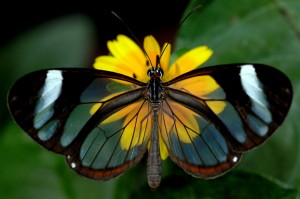I saw my first lightning bug of the season this past weekend while visiting my family in Tennessee. For many people lightning bugs (as they are commonly known in the South), also called fireflies, are a sign of summer!

Lightning bugs are not actually true bugs (in the scientific sense) but rather beetles in the superfamily of Lampyridae and so even though both common names are used, scientists are more likely to use the term firefly as I will do in this post. They are associated with summer because they are phenologically sensitive and many species emerge in the early summer once the temperatures are warm enough and begin adding ambiance to our evenings with their magical-seeming flashes.

So how do fireflies flash?
Fireflies species are bioluminescent, like many other organisms found in the deep ocean, as well as some terrestrial species including fungi and other insects like glowworms. Bioluminescence is an extremely energy efficient means of making light, where luciferase, an enzyme regulates the breakdown of luciferins or light producing compounds. The specific enzymes and luciferins vary in different bioluminescent species, for more information on fireflies click here.

Why do fireflies flash?
Fireflies primarily flash as courtship ritual, it is the way that they get mates! But the flashing also warns predators that they are poisonous and so may be a defensive mechanism.

As a kid fireflies represented days long enough to run around outside after dinner with my friends playing tag or capture-the-flag or hide-and-go-seek! As an adult they make me think of warm evenings sitting outside enjoying friends and a cold beer. Even though there are over 2000 species of fireflies that occur around the world, not everyone has these summer associations with bioluminescent fireflies. For example, there are only rare occurrences of these fireflies in the western United States.

So why are there so few fireflies in the western United States?
Well, after poking around on the internet for a bit, I discovered that there are actually several firefly species out west, mostly they are just what are known as dark fireflies which do not flash (with a few exceptions in remote locations) and some of which are active during the day rather than at night and so they aren’t observed the same way as they are in the east with their tell-tale flashing (although there are some diurnal fireflies in the east too).
Ok, so why no bioluminescent fireflies out west? The short answer is: no one knows exactly. But this sort of question is at the crux of ecology and evolution, why are some organisms in one location and not in another? And what governs how many of these organisms are there? Biogeography is the study of these sorts of questions.
Scientists are concerned that fireflies species may be in decline:
If you want to help study fireflies join Firefly Watch and put your efforts towards important Citizen Science.


I found this article very informative. I didn’t know that there were so many different kinds of fireflies; also, I didn’t know that the flashing might be a warning about the bug’s toxicity. I wonder why some seem to light up in synchrony?